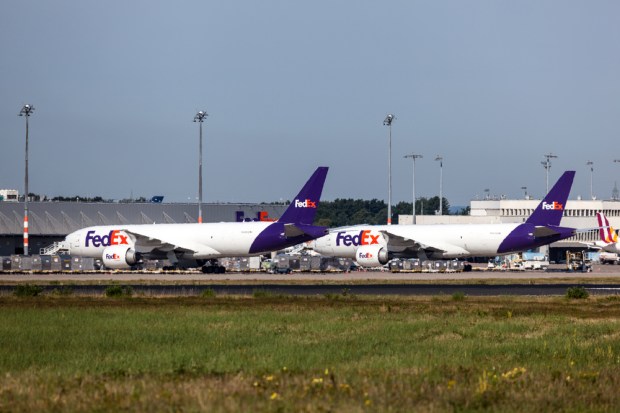Holiday X-Border Shipping Season … Starts Now

It may be slightly early to hang those holiday lights, but global shipping companies are already prepping for the holiday hustle. For the October X-Border Payments Optimization Tracker™, PYMNTS spoke with Chip Hull, vice president of FedEx Cross Border, about the challenges involved with cross-border commerce during the holiday season. That, plus the rankings of 116 major players and the latest headlines from around the space.
With the holiday shopping season nearly in swing, retail shoppers in the U.S. alone are expected to spend more than $1 trillion online and at brick-and-mortar stores.
U.S. holiday spending is forecasted to increase up to 4 percent this year compared to 2015, which, in turn, means merchants are expected to handle more global cross-border shipments and payments than usual.
PYMNTS recently spoke with Chip Hull, vice president of FedEx Cross Border, the eCommerce technology subsidiary of FedEx that has access to more than 220 countries and territories, about the logistical challenges involved with planning and operating during the busy holiday shopping season.
Last year, parent company FedEx experienced 15 percent growth in peak season volume and delivered more than 325 million packages, which exceeded previous holiday season records, Hull said. This year, the company expects each of the four Mondays during this upcoming peak period to be among the busiest in our company’s history.
The peak of international holiday shipping (originating from the U.S.) typically occurs shortly before the rush for domestic holiday shipping.
Shipments need to arrive well in advance of the peak rush so that retailers can display their products and warehouses can have access to the shipments for distribution in local markets, he said. Therefore, from a B2B perspective, that peak ends shortly before Thanksgiving.
When one shopping peak ends, Hull said, FedEx begins planning for the next peak through quality assessments of what went wrong during the previous peak, what could have been done better and what things went well to try and avoid pitfalls moving forward.
Measuring payment fraud and potential system capacity concerns are just two of the metrics that the company monitors to ensure the smooth sailing of its holiday shipping operation, Hull said.
And while using the feedback to make upgrades is essential for seamless operation, it is sometimes pivotal to limit the number of changes being introduced into the system during critical times to ensure system stability, he added.
With an operation involving more than 20,000 freight trucks shuttling “between 370 service centers, a lot can go wrong — transportation delay and weather, just to name a couple. This makes it imperative to have a backup plan should a surge arise,” Hull noted.
“The worst thing that could happen for us is to have outages or slowdowns during those peak times,” he said. “We’re very conscientious about that.”
For FedEx Cross Border, building a contingency plan entails taking a host of steps, ranging from preparing, implementing and monitoring the international holiday shipping plan to allocating human resources to plan for the peak shopping times and operational processes.
In the end, however, there’s only one KPI that truly matters, Hull pointed out: performance seen through the eyes of the customer. Based on consumer feedback, allocated teams develop corrective action plans to resolve any issues identified during the review phase.
Embracing Alternative Payments
During the holiday season, cross-border trade increases significantly, and FedEx Cross Border is seeing an increasing number of customers placing international shipping orders using their smartphone rather than taking a trip to the store, according to Hull.
The surge comes with a growing affinity for alternative forms of payment, especially in international markets, over traditional forms of payment, such as cash and credit and debit cards.
This has led FedEx to add more than 20 forms of payment, including PayPal and even bitcoin, to appeal to the varied payment preferences of international shoppers. And, as it turns out, Hull said, last year, alternative payments overtook traditional methods of payment.
“We have seen the rise of PayPal, Venmo, Alipay, and now, in parts of the world, alternative payments are preferred over credit cards,” he said, adding that concerns about payment fraud, in conjunction with the simplicity of the mobile environment, have led to the adoption of these alternative payments.
Hull believes the continued shift toward alternative payments will continue to grow moving forward. To improve its global reach, the company is now also powering checkout solutions for online retailers looking to integrate with shopping carts on their platform.
Untapped X-Border Opportunities
And as FedEx Cross Border looks into expanding its global operations, it is seeing the next big opportunity in powering end-to-end solutions for its enterprise customers.
“There’s the B2B aspect, which is the lead-up to that typical peak or holiday season,” Hull said. “There’s a pretty good peak before that on the freight side to stock and replenish inventory so that merchants can have products to sell.”
The company is focusing on capturing omnichannel fulfillment, much like Target, which anticipated 40 percent of orders to be shipped from the store amid the holiday season, according to the National Retail Federation.
“I think capturing that piece, as well as the movement to the end consumer from a cross-border perspective, is very attractive to us,” Hull added. “So, we’re enabling the entire supply chain when we do that.”
Clearing X-Hurdles
While for a customer shipping a Christmas gift, it might just mean dropping off a package at their nearest FedEx location, for the company, it means getting it through the doors of international customs agencies smoothly, which are often understaffed for the holiday season.
This presents a particularly bigger challenge for the company, Hull said. It’s important to make sure that FedEx’s relationships with customs officials and brokerage officials are as efficient as possible.
In the cross-border shipping space, calculating fees and taxes in real time is yet another challenge that plagues efficiency, Hull said. However, much of it can be resolved by maintaining transparency.
Both merchants and consignees have to have visibility on the front end of a transaction regarding any fees so that there are no supplemental bills after the fact, Hull said.
Will ironing out complexities help take another collective giant step toward taking cross-border shipping to new levels? The 2016 holiday season post-game report is just a couple of months away.
……………..
To download the October edition of the PYMNTS X-Border Payments Optimization Tracker™, click the button below.
About The Tracker
The PYMNTS X-Border Payments Optimization Tracker™ is the framework for evaluating players in the cross-border payments landscape, and the quarterly index tests the readiness of the companies to serve a global audience.

